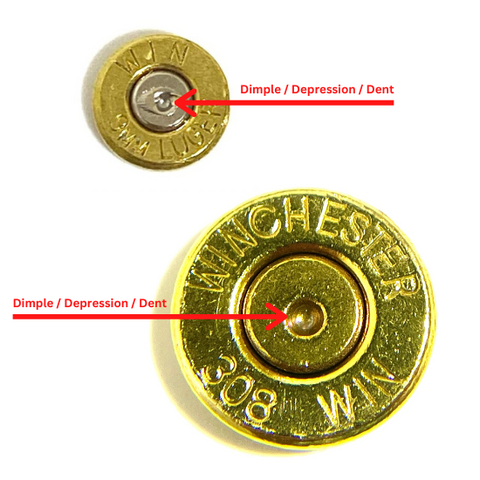Are once fired empty brass casings safe for jewelry, decor or crafting projects?
I don't own a gun and do not shoot. How do I tell if my empty brass casing has been fired and is not a live round?
There is a way to determine if your empty brass casing has been fired or not. Eventhough, we individually triple check each round by hand it is possible to receive an empty shells casing with an unfired primer intact.
Here's how to tell if your empty brass bullet casing has been fired:
Check the primer: The primer is the small, circular part of a bullet casing, that is struck by the firing pin to initiate the firing process. Usually this is where you can see the headstamp information that often includes the caliber and manufacturer. It may look something like "Winchester 9MM." Primers are usually gold or silver in color. If a bullet has been fired, the primer will have a small depression or dent on it. This confirms the shell casing has been fired and contains no powder.
If the primer is smooth with no indentations, that can mean the primer has not been fired.


Examine the cartridge case: If a bullet has been fired, the brass cartridge case that it was contained in will also show signs of having been fired. This may include markings on the case, such as dents or scratches.
It is important to note that these methods are not foolproof, and there are other factors that may affect the appearance of a bullet or empty brass cartridge case. However, by following these steps, you can get a good idea of whether a bullet has been fired or not.